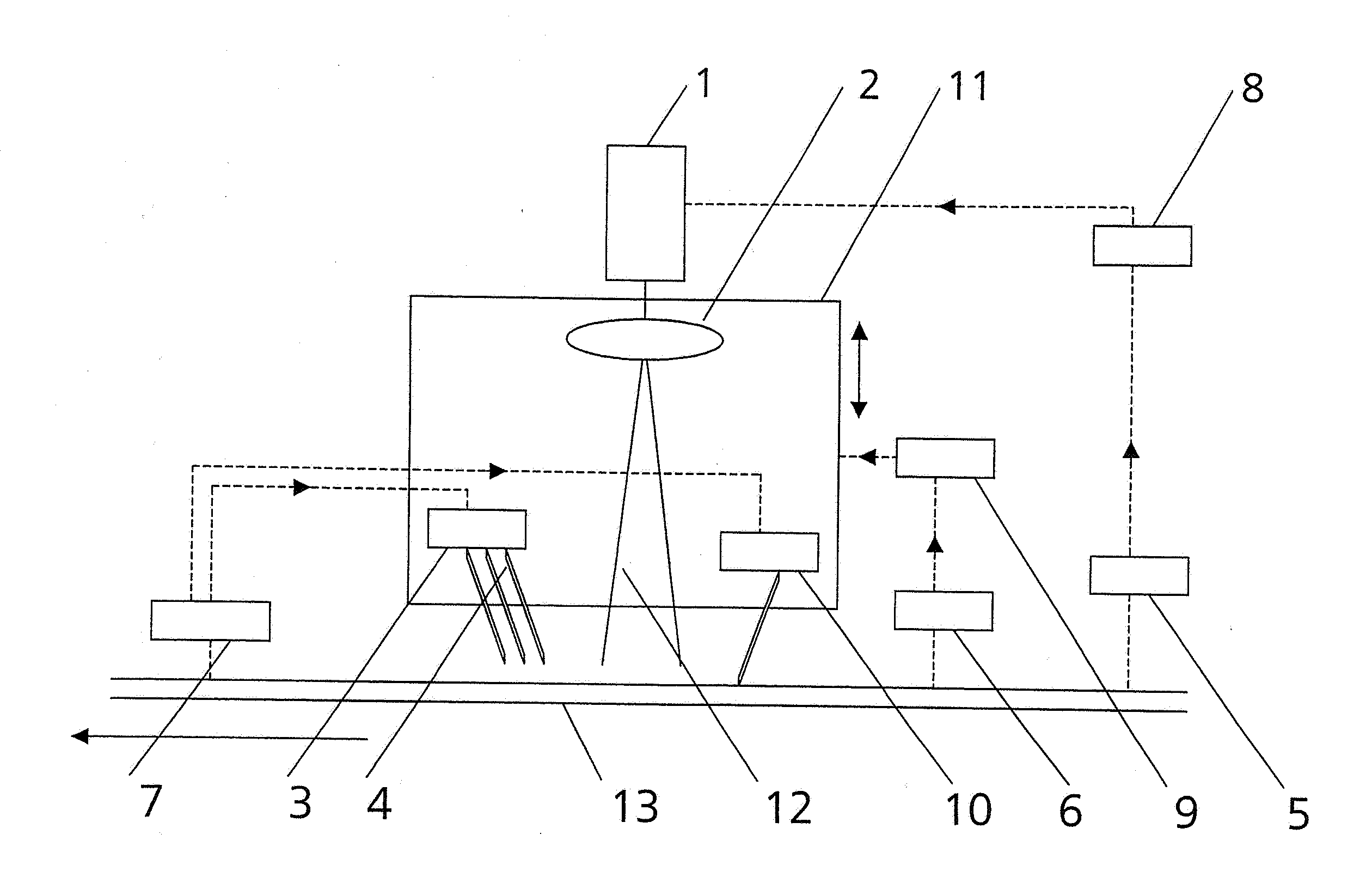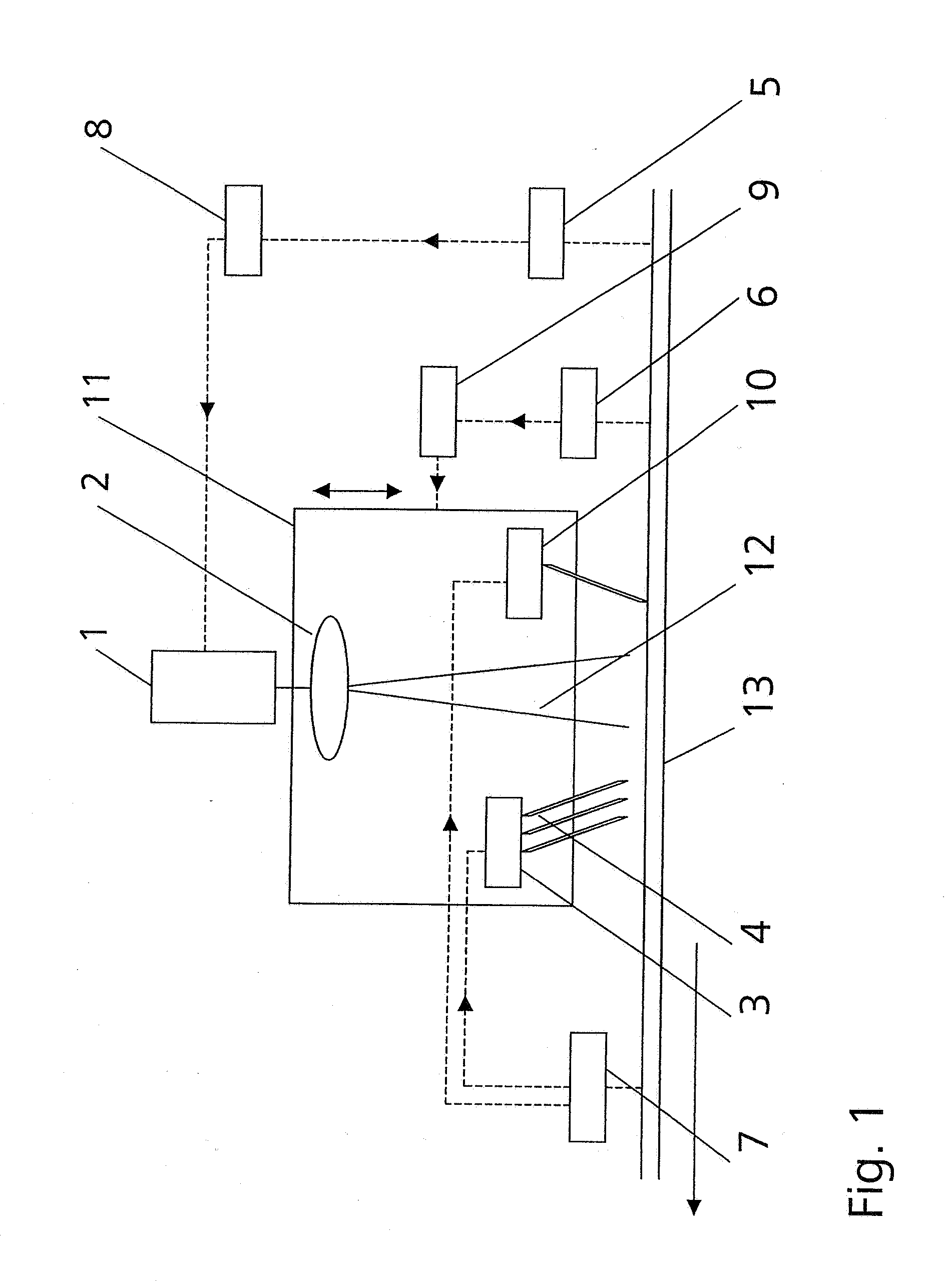Method and apparatus for trimming the edges of a float glass ribbon
a technology of float glass ribbon and trimming method, which is applied in the direction of control devices of furnaces, lighting and heating apparatus, furnace components, etc., can solve the problems of preheating and the method according to u.s. pat. no. 5 not being suitable for trimming float glass,
- Summary
- Abstract
- Description
- Claims
- Application Information
AI Technical Summary
Benefits of technology
Problems solved by technology
Method used
Image
Examples
Embodiment Construction
[0040]An apparatus according to the invention can basically be mounted at a bridge or a frame above the horizontal transporting device of a float glass installation. Two apparatuses which may share a temperature sensor 5 and a thickness sensor 6, as the case may be, are required to cut off both edges of a float glass ribbon 13 simultaneously.
[0041]As is shown in FIG. 1, an apparatus according to the invention basically comprises a laser 1, beam-shaping optics 2 which are arranged downstream of the laser 1 and which shape the emitted laser beam bundle 12 into a beam bundle with an elliptical cross section, a cooling arrangement 3 with a plurality of cooling nozzles 4 arranged one behind the other in a straight line, a temperature sensor 5 which measures in a noncontacting manner, e.g., an IR sensor, a thickness sensor 6 which measures in a noncontacting manner, e.g., an ultrasonic sensor, a crack detector 7, a control device 8 by which the laser output is controlled as a function of ...
PUM
 Login to View More
Login to View More Abstract
Description
Claims
Application Information
 Login to View More
Login to View More - R&D
- Intellectual Property
- Life Sciences
- Materials
- Tech Scout
- Unparalleled Data Quality
- Higher Quality Content
- 60% Fewer Hallucinations
Browse by: Latest US Patents, China's latest patents, Technical Efficacy Thesaurus, Application Domain, Technology Topic, Popular Technical Reports.
© 2025 PatSnap. All rights reserved.Legal|Privacy policy|Modern Slavery Act Transparency Statement|Sitemap|About US| Contact US: help@patsnap.com


